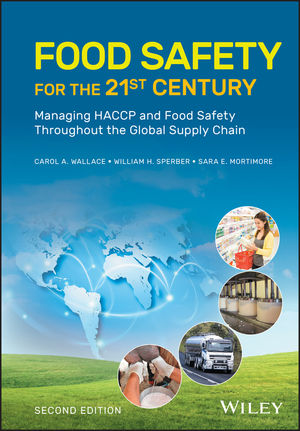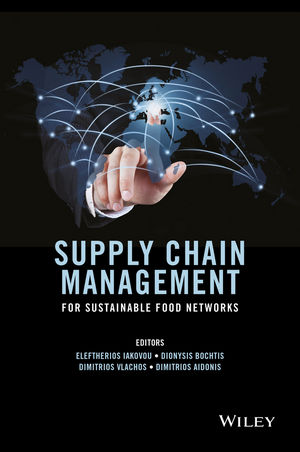State of the Foodservice Supply Chain

Due to rapidly shifting consumer expectations, as well as increasing food costs, supply and demand volatility, the supply chain is growing in strategic value for all restaurant chains, according to the “State of the Foodservice Supply Chain 2014.”
This collaborative study from Chicago-based Technomic Inc., a research and consulting firm in the foodservice industry, and HAVI Global Solutions, Downers Grove, Ill., exposes a paradigm shift in the definition of supply chain maturity—the drive to success is no longer focused on cost, but on collaboration, agility and adaptability.
"Consumers are now more in control than ever before," says Bob Goldin, Technomic executive vice president. "Not only do they want an increasingly customized selection of products, but they [also] expect these foods and beverages made available to them faster and made of ingredients perceived as better. To succeed in this new environment, restaurant chains have to meet these challenges head on."
To establish an understanding of supply chain capability within restaurant chains, this report employs the HGS Foodservice Supply Chain Maturity Model, which accounts for the unique complexities in the foodservice supply chain, so that businesses may chart their progression.
"The HGS 5-stage model demonstrates that as companies move through the stages, their processes and tools become more mature and more integrated," says Ken Shearer, senior vice president of sales for HAVI Global Solutions. "As supply chain departments gain access to increasing amounts of data, including supplier, distributor and restaurant POS data, they can use the information for better planning."
HGS and Technomic conducted a quantitative online survey in 2013 to understand more about restaurant chains’ supply chain capabilities. The same methodology and the same survey was used in 2014 to continue taking a pulse on the state of the restaurant supply chain in the United States. The 2014 survey asked supply chain executives a series of self-assessment questions about their supply chain capabilities that allowed for measurement of each chain’s capabilities along the core dimensions. The survey also included a series of questions about their company’s business challenges, organizational barriers and business outcomes. Answers to these questions gave the researchers critical insight to help answer an important question—what is the impact or benefit of advanced supply chain capabilities (and thus a higher supply chain maturity level) on the chain’s ability to meet its organizational and business objectives?
Study participants were divided into three groups based on their company’s sales performance:
Leaders: Those whose companies achieved better than the industry average 3.3% combined average growth rate in sales over the 2010-2013 period.
Average: Those companies with 3-year CAGR that was positive, but equal to or less than the 3.3% industry average.
Laggards: Those whose companies who saw negative CAGR over the 3-year period.
Key findings
1. Chain restaurants across the board are feeling the pressure of greater supply-side and demand-side volatility.
Commodity cost pressure and volatility represented two of the biggest challenges that restaurant chains faced in 2014. However, one of the critical findings of the 2014 survey is that chains are feeling the pressure of rapidly changing and shifting consumer expectations; both demand volatility and price sensitivity. Supply chain executives rated these issues as some of the biggest hurdles in their organization’s ability to meet its objectives.
However, these issues do not loom as large among Leaders as among executives in the Average and Laggard groups.
These concerns of supply chain executives are not unfounded. The industry has gone through tumultuous conditions since the recession of 2007?2009. While overall industry performance has improved since then, demand volatility is a factor, evidenced in same-store sales trends.
Several major structural shifts in the industry are creating these volatile conditions. Not only are emerging chains and independent restaurants beginning to take share from the more stablished chains, but the restaurant industry as a whole is also facing growing competition from the widening availability of fresh prepared foods in non-restaurant locations such as supermarkets and convenience stores.
Consumers (especially those in the higher income brackets) are also increasingly spending their food dollars on offerings that address specific concerns (e.g. local, organic, gluten-free, GMO-free, humane, etc.). None of these categories of alternative food options is a major threat individually, but collectively, they are affecting sales at established and mature chains that have less ability to offer such alternatives.
Survey respondents say demand volatility and price sensitivity are important and growing concerns within the industry. While these challenges may have been secondary to cost pressures over the last two years, chain executives believe that demand-related challenges will rise in relative importance over the next two years.
2. Supply-side volatility has also adversely affected all chains in 2014.
Besides demand-side volatility, the industry is also facing supply-side volatility. Another major finding of the 2014 survey was that chain restaurant respondents across the board were very concerned about food costs and cost volatility. While these were important issues in the 2013 results, the relative importance (or degree of concern) seemed to be greater in 2014.
A higher percentage of chains claimed that food costs had increased in 2014 than in 2013. While large chains were able to weather the food cost challenges slightly better (with 14% reporting higher food costs), high percentages of medium and small chains felt the impact (with 66% and 64%, respectively) reporting higher food costs.
The number of chain executives reporting an increase in inventory write-offs was not as high as those reporting increased food costs. Nevertheless, almost 20% of Average and Laggard chains reported increased write-offs. Chain executives across the board listed inventory obsolescence as one of the Top 5 operational challenges that they face.
While food costs are clearly a concern, supply chain executives also face cost pressures on the distribution side. More than three-quarters of all chains report that “increasing cost/pressure in logistics and transportation” has been a significant challenge faced in the last three years. Supply chain executives at almost a third of all chains across parameters of size and supply chain maturity reported increased distribution costs.
It is anticipated that distribution costs will continue to climb, affecting the bottom line.
While oil price declines will help (for as long as they last), the distribution industry’s challenges go beyond fuel cost. They also include wage inflation (due to structural driver shortages), shortfalls in rail capacity (the leading alternative to trucking) and degraded infrastructure. The way the situation looks today, the distribution industry’s future is one of steadily rising costs.
3. Supply chain alone does not drive revenue, profit or growth; yet chains with more mature supply chains tend to have greater top-line performance.
Analysis of the 2014 results seems to confirm the 2013 finding that supply chain maturity contributes to greater top-line performance. The macro demand side conditions account for the lack of correlation between the performance of Level 1 and Level 5 chains in relation to their supply chain capabilities.
This lack of correlation is to be expected in the short term in a mature industry undergoing a major transformation.
The largest chains with highly mature concepts, many of which are in the quick-service restaurant (QSR) sector, are unable to deliver high performance, despite highly capable supply chains, because they are dealing with many headwinds (including heightened competition, changing customer preferences, geographical saturation and demographic changes).
Younger chains, many of them in the fast-casual sector, are growing fast despite lesser supply chain capabilities, simply because consumer demand for their offerings is so strong. Easier access to capital and strong franchisee interest allow these chains to capitalize on shifting demand patterns, entering new markets and adding units without necessarily having to put all the supply chain pieces together. As the Technomic forecast demonstrates, market share in a slow-growth industry is shifting to fast casual.
And, as chains move past their initial high-growth stage and as their offerings become more mainstream, business realities that have been masked by the phase of rapid growth begin to surface. These findings strongly suggest that supply chain maturity contributes to greater performance for chains that are past their initial phase of development. Supply chain executives at fast-growing younger chains with Level 1 and Level 2 supply chain organizations report higher inventory write-offs, and express greater concern with inventory obsolescence, compared to respondents from more mature chains. Over time, as growth rates level off, long-term business success cannot be achieved without addressing such supply chain issues.
4. The industry will continue to ramp up innovation.
This means that collaboration between supply chain, culinary and marketing departments will be even more critical.
Volatile demand and market share realignment have driven culinary and marketing departments to step up the pace of product development. Organizations with lower levels of supply chain maturity are feeling the strain. Supply chain managers at Average and Laggard chains are more likely to list among their Top 3 business hurdles new demands and requirements from culinary and marketing arriving faster than they can be supported by the supply chain organization.
Such pressure can lead to departments getting out of sync, especially among Average and Laggard chains. The percentage of supply chain executives in these groups who listed a frequent misalignment between supply chain and marketing as among their top operational challenges has increased significantly compared to 2013.
A challenging supply-side and demand-side environment is a double-edged sword for supply chain organizations. Demand-side conditions are thrusting chains towards innovation and change. Supply chain executives not only have to deal with the pressure that this adds, but are also hard pressed to forecast what will happen to their business as a result of innovation.
In 2014, supply chain executives listed as among their major business challenges the ability to predict the impact of new menu introductions, price changes and new LTOs. Compared to Leaders, Average and Laggard chains find this even more challenging. They are still in the less mature stages of their supply chain evolution; collaboration culture and frameworks, forecasting sophistication and near-real-time visibility into changing conditions are still nascent capabilities.
5. Supply chains are growing in strategic value for all restaurant chains.
The strategic importance of the supply chain function seems to be on the rise. In 2014, restaurant chains across the board reported a broader range of capabilities than in previous years, including capabilities associated with higher levels of supply chain maturity. While such claims are not externally validated, there seems to be a greater realization that supply chain maturity and capabilities are important.
This new awareness may have come about in response to the industry forecast of marginal to no real growth. More chains are gearing up to succeed tomorrow by putting together a supply chain capable of managing today’s change.
6. Restaurant chains are not merely talking about greater supply chain capabilities, but also acting to bring them about.
Supply chain managers are not simply talking about supply chain capabilities in a general sense; they are often very specific.
This attention is leading to greater visibility, greater collaboration, and most of all, the ability to be more responsive and flexible. This mindset is evident in supply chain executives’ assessments of what they consider their best opportunities.
Compared to 2013, a larger number of chains across the size and performance spectrum are actively working on projects to implement change and deliver greater supply chain capabilities.
Among the most important areas of capabilities to supply chain managers in 2014 was the ability to adjust to deviations from a plan as well as more real-time visibility to deviations from plan required as a precursor.
100% of large chain supply chain executives believe that enhanced capabilities to achieve more real-time visibility to deviations from a plan are a top way to add value to their organization. Such capabilities are valued more highly than in 2013, when fewer than half (45%) of large chain respondents agreed that greater ability to note deviations in real time was important. However, the 2014 results show that smaller percentages of respondents from medium-sized and small chains (56% and 76%, respectively) place a high value on this capability.
The number of respondents from large chains claiming to have projects or initiatives under way to improve their ability to adjust to deviations has increased compared to the previous year. In 2013, only 38% of those from large chains reported having projects in this area (vs. 100% in 2014). Interestingly, the percentages of medium and small chains reporting active projects in this area have declined (25% of medium chains and 39% of small chains in 2014).
Along the performance spectrum, Average and Laggard chains claiming to have projects or initiatives under way to improve their ability to adjust to deviations has increased materially compared to last year.
In 2013, only 13% of respondents from Average chains reported having projects in this area vs. 31% in 2014.
In 2013, 21% of Laggard chains claimed to have projects in this area vs. 33% in 2014.
Another dimension of advanced supply chain capability now top of mind is that of visibility and synchronicity across the internal and external supply chain. This is a hallmark of supply chain maturity. At the end of the day, this is what allows Leaders to be nimble and adjust to changes.
Collaboration with supply chain partners appears to be of growing importance to chains.
A higher percentage of supply chain executives in 2014 than in 2013 agreed that “standardization of data between partners to make collaboration easier” as well as “more control over production and distribution decisions outbound from manufacturers” would be very valuable to them.
However, respondents seem to have no greater confidence that they are making progress in these areas.
The proportion of respondents who say they have integrated planning processes across external stakeholders remained flat.
Compared to 2013, a larger percentage of supply chain managers see “supply chain partners lack[ing] the technology or willingness to provide the visibility we want” as one of their Top 3 barriers to success.
Conclusion
Supply chain maturity is an important tool to help chain restaurants face the challenges of an uncertain future. The restaurant industry is mature. After enjoying three decades of consistent growth driven in large part by expansion, the foodservice industry is facing a major structural shift, bringing into question the underlying strategic assumptions that drive the chain business model.
In the growth decades, the chain restaurant business enjoyed relatively few disruptions and largely predictable costs. Growth forecasts call for incremental real growth over the next five years, buoyed by favorable economic tailwinds and consumer confidence. But, looking ahead, the chain restaurant market is tepid, while costs are rising and increasingly volatile.
This is an industry with plenty of innovation coming its way, including growth in certain restaurant segments as well as non-traditional foodservice venues. Customer demands are changing. Cost and demand volatility—whether caused by shifting customer demand patterns, government regulation, innovations in business models or natural phenomena, including climate change—will be major factors for some time to come. The market is feeling the pain of rising costs and less predictability, and respondents in the 2014 survey are well aware of these realities and concerned that these issues are here to stay.
The next decade will be especially critical for the largest and most mature chains in the industry. They have significant buying power and well-resourced and very capable supply chain organizations, but it is not at all certain that these chains are agile enough to meet the demands of the next decade. While the big chains’ supply chain managers can check off an impressive list of capabilities, there is a paradigm shift in the definition of supply chain maturity—the drive to success is no longer focused on cost, but on collaboration, agility and adaptability.
The growing importance of supply chain challenges reported by the participants in this survey suggests that they are realizing that supply chain maturity goes beyond lowest cost and reliable supply. As the HGS Foodservice Supply Chain Maturity Model framework suggests, the value of higher levels of supply chain maturity is ultimately in the ability to synchronize the supply chain with product demand, and do so in a fashion that approaches real time.
This study also shows that restaurant-chain leaders gave their supply chain organization a seat at the table earlier than other chains. They are far more attuned to consumers and see market volatility as an opportunity.
CLICK HERE to read more about the study, review charts and graphs, etc.
Looking for a reprint of this article?
From high-res PDFs to custom plaques, order your copy today!






